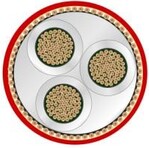FAQ
Find your answer here

Welcome to our FAQ page, where you will find the answers to frequently asked questions.
We know that it can sometimes be difficult to find the right information quickly and easily. This is why our service experts have created this page; to help you resolve problems and answer questions.
We hope that you will be able to find everything that you are looking for on this page. If you have further questions or require additional information, please do not hesitate to contact us.
Insulating oil testing
For systems that are in operation, various test methods are available to evaluate the condition of the insulating oil. These test methods can be divided into two basic categories:
- Evaluation of the current condition and suitability of the insulation in electrical equipment:
- Breakdown voltage measurement under dielectric load
- Dissipation factor measurement
- Analysis of the ageing of the insulation system:
- Determination of the specific resistance
- Visual inspection of the color and appearance of the insulating oil
The insulation capacity of insulating liquids is assessed using breakdown voltage testing. The test results indicate whether any ageing of the oil has taken place, e.g. due to excessive water content, impurities or oxidation of the oil.
You can find all the information about this here along with details of which BAUR devices can be used to perform this test.
The following companies should regularly perform a breakdown voltage test:
- Power utilities, especially in substations
- Power utilities, mainly in power plants
- Railway companies that use high voltage transformers for locomotives and switchgear
- Testing laboratories for oil analysis that provide testing services
- Manufacturers of transformers and switchgear that carry out quality checks on the oil
- Companies in the oil industry that test new oil during production
You can currently test the five different types of insulating liquid that are commonly used. These comprise:
- Mineral oil
- High molecular weight hydrocarbons (HMWH)
- Silicone liquids
- Liquids based on synthetic esters
- Liquids based on natural esters (vegetable oil)
Certain parameters are recommended in standards IEC 60422 (guidelines for monitoring and maintenance) and VDE 0370 (guidelines for monitoring and maintenance), and by some manufacturers of insulating oil.
Dielectric breakdown voltage testing is a comparatively quick and straightforward method that allows you to determine the degree of contamination of insulating oil. These contaminants usually consist of water, but can also include conductive particles, dirt, deposits, insulating particles and by-products of oil oxidation and ageing. For operating equipment, dielectric breakdown voltage testing is a practical and efficient way to detect moisture and other contaminants in the oil before they can cause a catastrophic failure. The knowledge gained from this test can also be used as an aid:
- Predicting the remaining service life of a transformer
- Increasing operational safety
- Prevention of system fires
- Maintaining reliability
The instructions for monitoring insulating oil in operational situations can be found in standards IEC 60422 (guidelines for monitoring and maintenance) and VDE 0370 (guidelines for monitoring and maintenance). Here, a distinction is made based on the transformer type, the power, and the load. These standards provide guidelines regarding the testing frequency, which should be increased in cases of unfavourable results or particularly high stress.
In order to obtain meaningful results from insulating oil testing, oil samples must be properly taken by instructed personnel. Here are a few tips to help you take samples without any issues.
Individual characteristics of insulating oil can also be exhibited to a certain extent by other oils. However, the speciality lies in the combination of these properties. For example, other low viscosity oils may have a high breakdown voltage and possibly a high resistance and a low dielectric loss factor, provided they are clean and dry. But these properties could change when a low pour point, high flash point and excellent oxidation resistance come into play.
Of particular note is the fact that conventional insulating oils have this combination of properties without the addition of additives. This is particularly important for reuse, as it makes them ideal for recycling
Cable fault location

Screened / multi-core
- Low voltage
- 3 or 4 phase
- Screen
- Most faults occur between phases

Unscreened / multi-core
- Low voltage
- 3-5 phases
- Faults between phase-earth and phase-phase

Screened / coaxial
- Medium or high voltage
- 1 phase
- 1 screen
- Faults between phase-screen

Screened coaxial
- Medium or high voltage
- 3 phase
- 3 screen
- Faults between phase-screen
- Faults between phase-phase are unlikely

Screened coaxial
- Medium voltage
- 3 phase
- Faults between phase-phase or phase-screen
- Fault location is often difficult
In general, there are two types of insulating material used for power cables:
- Paper-insulated mass-impregnated cables (PILC)
- Cross-linked polyethylene (XLPE)
Short-circuit
Damaged insulation leads to a low-resistance connection of two or more conductors at the fault location.
Short-circuit to earth
Earth faults or short-circuits to earth are low-resistive connections to the earth potential. The double earth fault is another type of fault; this fault shows two earth faults on different phases with separated bases.
Cable sheath faults
Damage to the outer cable sheath does not always lead directly to faults. However, it can cause long-term cable faults, among other things, as a result of moisture penetration and insulation damage.
Intermittent faults
Frequently, faults do not occur constantly, but rather occasionally depending on the load on the cable. One reason for this can be drying out of oil-isolated cables with a low load. Another is partial discharge through ageing or electrical trees in cables.
Cable breaks
Mechanical damage and ground movements can lead to breakage of individual or multiple conductors.
Time Domain Reflectometry (TDR) is used to locate low-resistive faults and cable breaks, and to determine the cable length. You can find out more here.
-
Time Domain Reflectometry (TDR) for low-resistive faults and cable breaks
-
Secondary/multiple impulse method (SIM/MIM) for high-resistive faults and breakdown faults
-
Secondary/multiple impulse method used in DC mode (DC-SIM/MIM) for intermittent faults
-
Conditioning-SIM/MIM for difficult-to-locate faults and wet faults
-
Decay method for breakdown faults with high voltage
-
Impulse current method (ICM) for high-resistive faults and breakdown faults
-
Impulse current method used in DC mode (DC-ICM) for chargeable breakdown faults
-
Measurement mode with envelope curve display for small, intermittent faults
-
Fault conditioning (burn) for high-resistive cable faults on paper-insulated lead-covered cables
You can find out more about the main measurement methods on our application page.
The secondary/multiple impulse method is the most well-established and precise cable fault pre-location method. High-resistive faults and breakdown faults are triggered by a single HV pulse, and the fault distance is measured very precisely several times via the TDR technology and automatically evaluated.
You can find out more here.
The impulse current method is used to locate high-resistive faults and breakdown faults. The fault distance is determined by evaluating the impulse current diagrams. Particularly suitable for use on long cables. You can find all the information about this cable fault pre-location method on our application page.
With DC-SIM/MIM, the energy from the surge voltage generator is fed directly into the cable; discharge and an electric arc occur at the fault location when the output voltage level reaches the target breakdown voltage level.
The decay method is used to locate breakdown faults with high voltage. The oscillating voltage reflection waves are evaluated automatically to determine the fault distance.
You can find all the information about this here.
The bridge method is used for the following types of fault:
- Low- and high-resistive cable faults
- Low- and high-resistive cable sheath faults
- Core-to-core faults in unscreened cables
- Faults in pilot cables and signal lines
- Faults in unscreened cores to earth
When locating high-resistive and intermittent faults in underground cables, the acoustic method is used to locate the precise fault location. Pulses emitted by a surge voltage generator (SSG) cause a voltage pulse to travel along the cable, and the magnetic and acoustic fields are detected by the protrac® cable fault location device.
The following types of fault can be found using tracing:
- Low-resistive faults on twisted cables
- Faults on pilot cables
- Faults on low-voltage cables
- Earth faults
- Detection of cable connections
Calibration
Our accreditation remains active and in effect for as long as we continue to comply with the high standards and quality requirements necessary to meet the accreditation. Our commitment to excellence and continuous improvement ensures that we will retain our accreditation and be able to continue providing you with a reliable, high-quality service in the future.
Our accreditation is a symbol of our commitment to the highest quality standards and our continuous striving for excellence. With this seal of approval, we want to give you, as our customer, the assurance that you are working with a professional and trustworthy company.
We are convinced that our accreditation supports us in working continuously on our processes and operations in order to further improve our services and surpass the expectations of our customers.
We are accredited for the calibration of the measurands current and high voltage. Click here to read the entire scope of the accreditation.
Adjustment is an independent process and differs from calibration. While calibration determines the current condition of the unit under test without making any changes to it, adjustment involves permanent amendments or changes to the unit under test in order for it to meet a specific standard or reference value.
Our accredited calibration process simply involves performing measurements that check the accuracy of the unit under test and that it meets the specified standards. If any adjustment is needed for the unit under test to meet the required specifications, this is carried out as a separate process and is not part of the actual calibration.
However, it can still be performed as part of a factory or accredited calibration if this is desired.
Click here to find out about the entire accredited calibration process.
Calibration is an important process whereby we compare the measurements of your device with those of a more accurate reference instrument or a standard. This enables us to identify potential faults with the device under test. In some cases, we also perform an adjustment in order to correct any deviations. However, a successful calibration does not automatically mean that the device will be brought up to the specified level of performance. The main purpose is to ensure that the instrument is functioning with the level of accuracy specified by the manufacturer.
Even the best components in your device can change over the course of time, which can lead to the measurement results not being as accurate as they once were. It is therefore important to check on a regular basis whether the device still meets your requirements.
The calibration process allows us to determine the exact condition of your device, making it possible to identify and rectify any hidden measurement errors in good time rather than them go unnoticed and lead to potentially incorrect results.
The calibration process thus ensures that your device will continue to provide reliable and precise measurements that we can rely on. You can therefore be confident that your measurements are always correct and that you will receive the desired results.
We recommend having your devices calibrated regularly to ensure that they remain accurate and reliable. However, we are unable to provide a specific time interval at which the calibration should be carried out.
The frequency of calibration depends on various factors, such as your quality management system, the specific operational conditions of your device and the performance characteristics. Sometimes it is expedient to have sensitive applications that require a greater degree of accuracy calibrated more often, while in other cases it is possible to extend the calibration interval if your individual requirements allow.
A good guideline for the initial calibration is to follow the manufacturer's instructions for the device. These provide a good starting point and can help you to determine the optimum calibration interval for your specific situation.
If you are unsure or require further information, you can contact us or the device manufacturer to determine the best course of action. Then you will be sure that your devices are always in the best condition and are providing you with reliable results.
Our calibration certificate contains all the key information about the calibration. In addition to the measured values, it includes information about the unique identification of the unit under test (your device), the environmental conditions, and the tester who performed the calibration. It also lists the information required for traceability, such as the references and processes used.
Traceability is extremely important for ensuring accurate and reliable measurements. It is a continuous, documented comparison process that links the measurements of an instrument to a recognised national and legal standard.
In order to achieve a traceable calibration, we have to calibrate every instrument and every standard properly in a hierarchical sequence that stretches back to the national standard, during which we carefully document the results.
This documentation acts as evidence that all of the calibrations in the chain have been performed correctly and provides the necessary information to prove this compliance. At every stage of the traceability chain, we calculate and note down the uncertainty of measurement in order to determine a total degree of uncertainty for the entire chain.
Laboratories such as ours that contribute to the traceability chain demonstrate their technical competence through accreditation, thus providing evidence of their specialist knowledge. Traceability plays a major role in the fulfilment of global measurement and regulatory requirements. It confirms that your instruments provide measurements in accepted units to the agreed level of accuracy. By complying with traceability standards, you can depend on the reliability and validity of your measurement results while meeting the expectations stipulated by international standards and regulations.
We only perform our calibrations in our accredited laboratory because that is where we are able to monitor and control the environmental factors such as temperature and humidity. Your devices must be sent to our laboratory in Sulz in order to spend at least 12 hours stabilising and acclimatising to our environment before we start the calibration.
There is no clear answer to this. The following questions may aid you in your assessment:
- When was your device last calibrated?
- How long is the calibration interval?
The device manufacturer often provides information regarding the recommended calibration interval. It is advisable to check the manufacturer's specifications and follow these guidelines to ensure that your device always provides precise results. We generally recommend a calibration interval of 1 year.
Yes, we are planning to extend the scope of the accreditation. You can find the current scope on our website.
We are committed to calibrating your devices as quickly as possible. In general, we aim for a maximum turnaround time of two weeks within our company. In addition, shipping times must also be taken into consideration.
An accredited calibration and a factory calibration are two different types of calibration procedures that are used in different contexts. The main difference between the two is the type of certification and the traceability of the measurement results.
We perform the accredited calibration in our accredited calibration facility, which is certified by the Austrian National Accreditation Body "Akkreditierung Austria". The accreditation confirms that we have met certain quality standards and possess the expertise to perform the calibration of certain measurands. The measurement methods used, the traceability of the measurement results to national or international standards, and calibration uncertainty are strictly monitored and documented.
A factory calibration, also known as the manufacturer calibration, is normally performed before the device leaves BAUR and is delivered to you. The factory calibration serves to ensure that the device meets the specified performance requirements before it reaches you.
An accredited calibration typically offers a higher level of reliability and recognition by independent certification bodies, while a factory calibration involves less rigorous monitoring and certification.